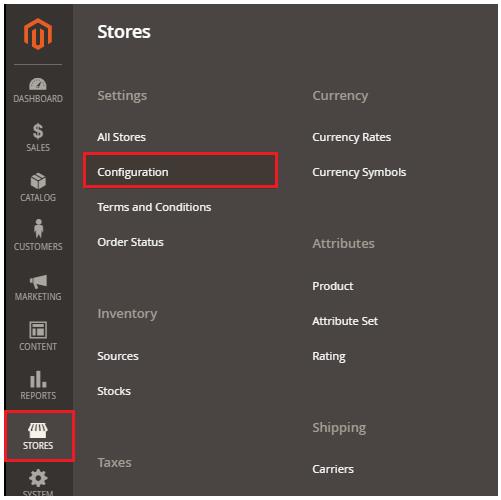1、CountDownLatch:
一个同步工具类,它允许一个或多个线程一直等待,直到其他线程的操作执行完后再执行。
2、ThreadPoolExecutor/ExecutorService:
线程池,使用线程池可以复用线程,降低频繁创建线程造成的性能消耗,同时对线程的创建、启动、停止、销毁等操作更简便。
3、使用场景举例:
年末公司组织团建,要求每一位员工周六上午8点到公司门口集合,统一乘坐公司所租大巴前往目的地。
在这个案例中,公司作为主线程,员工作为子线程。
4、代码示例:
|
1
2
3
4
5
6
7
8
9
10
11
12
13
14
15
16
17
18
19
20
21
22
23
24
25
26
27
28
29
30
31
32
33
34
35
36
37
38
39
40
41
42
43
44
45
46
47
48
49
50
51
52
53
54
55
56
57
58
59
60
61
62
63
64
65
66
67
68
69
70
71
72
73
|
package com.test.thread;
import java.util.concurrent.CountDownLatch;
import java.util.concurrent.ExecutorService;
import java.util.concurrent.Executors;
import java.util.concurrent.LinkedBlockingQueue;
import java.util.concurrent.ThreadPoolExecutor;
import java.util.concurrent.TimeUnit;
/**
* @author javaloveiphone
* @date 创建时间:2017年1月25日 上午10:59:11
* @Description:
*/
public class Company {
public static void main(String[] args) throws InterruptedException {
//员工数量
int count = 5;
//创建计数器
//构造参数传入的数量值代表的是latch.countDown()调用的次数
CountDownLatch latch = new CountDownLatch(count);
//创建线程池,可以通过以下方式创建
//ThreadPoolExecutor threadPool = new ThreadPoolExecutor(1,1,60,TimeUnit.SECONDS,new LinkedBlockingQueue<Runnable>(count));
ExecutorService threadPool = Executors.newFixedThreadPool(count);
System.out.println("公司发送通知,每一位员工在周六早上8点到公司大门口集合");
for(int i =0;i<count ;i++){
//将子线程添加进线程池执行
Thread.sleep(10);
threadPool.execute(new Employee(latch,i+1));
}
try {
//阻塞当前线程,直到所有员工到达公司大门口之后才执行
latch.await();
// 使当前线程在锁存器倒计数至零之前一直等待,除非线程被中断或超出了指定的等待时间。
//latch.await(long timeout, TimeUnit unit)
System.out.println("所有员工已经到达公司大门口,大巴车发动,前往活动目的地。");
} catch (InterruptedException e) {
e.printStackTrace();
}finally{
//最后关闭线程池,但执行以前提交的任务,不接受新任务
threadPool.shutdown();
//关闭线程池,停止所有正在执行的活动任务,暂停处理正在等待的任务,并返回等待执行的任务列表。
//threadPool.shutdownNow();
}
}
}
//分布式工作线程
class Employee implements Runnable{
private CountDownLatch latch;
private int employeeIndex;
public Employee(CountDownLatch latch,int employeeIndex){
this.latch = latch;
this.employeeIndex = employeeIndex;
}
@Override
public void run() {
try {
System.out.println("员工:"+employeeIndex+",正在前往公司大门口集合...");
Thread.sleep(10);
System.out.println("员工:"+employeeIndex+",已到达。");
} catch (Exception e) {
e.printStackTrace();
}finally{
//当前计算工作已结束,计数器减一
latch.countDown();
try {
Thread.sleep(10);
} catch (InterruptedException e) {
e.printStackTrace();
}
//执行coutDown()之后,继续执行自己的工作,不受主线程的影响
System.out.println("员工:"+employeeIndex+",吃饭、喝水、拍照。");
}
}
}
|
打印输出结果如下:
|
1
2
3
4
5
6
7
8
9
10
11
12
13
14
15
16
17
|
公司发送通知,每一位员工在周六早上8点到公司大门口集合
员工:1,正在前往公司大门口集合...
员工:1,已到达。
员工:2,正在前往公司大门口集合...
员工:2,已到达。
员工:1,吃饭、喝水、拍照。
员工:3,正在前往公司大门口集合...
员工:2,吃饭、喝水、拍照。
员工:3,已到达。
员工:4,正在前往公司大门口集合...
员工:3,吃饭、喝水、拍照。
员工:4,已到达。
员工:5,正在前往公司大门口集合...
员工:4,吃饭、喝水、拍照。
员工:5,已到达。
所有员工已经到达公司大门口,大巴车发动,前往活动目的地。
员工:5,吃饭、喝水、拍照。
|
注意:
每一个员工到达之后,执行countDown()方法,直到所有员工到达之后,计数器为0,主线程才会继续执行。
但子线程执行了countDown()方法,之后会继续自己的工作,比如上面的【吃饭、喝水、拍照】,是不受主线程是否阻塞、其它线程是否已经执行countDown()方法的影响的。
5、CountDownLatch与CyclicBarrier的对比可以看:
java多线程CyclicBarrier使用示例,让线程起步走
补充:CountDownLatch踩过的坑
线上生产环境dubbo报线程池满了,经过一天排查锁定在开三个线程计算最后合并数据的步骤中。简单描述下该步骤线程开三个 调用三个不同的方法 使用countdownlatch 计数器等待三个方法全部执行完成 合并数据。
但是由于其中一个方法调用第三方接口,接口返回异常导致转换数据报错。导致其中一个方法未正常完成。
举例demo:
|
1
2
3
4
5
6
7
8
9
10
11
12
13
14
15
16
17
18
19
20
21
22
23
24
25
26
27
28
29
30
31
32
33
34
35
36
37
38
39
40
41
42
43
44
45
46
47
48
49
50
51
52
53
54
55
|
public static void main(String[] args) {
ExecutorService executorService =Executors.newFixedThreadPool(3);
CountDownLatch cdl = new CountDownLatch(3);
executorService.execute(new Runnable() {
@Override
public void run() {
/*try {
function1();
} catch (Exception e) {
//异常处理
e.printStackTrace();
}
finally {
cdl.countDown();
}*/
function1();
}
});
executorService.execute(new Runnable() {
@Override
public void run() {
function2();
cdl.countDown();
}
});
executorService.execute(new Runnable() {
@Override
public void run() {
function3();
cdl.countDown();
}
});
try {
cdl.await();
//cdl.await(20,TimeUnit.SECONDS);
System.out.println("三个执行线程结束");
} catch (InterruptedException e) {
e.printStackTrace();
System.out.println("执行线程异常");
}
finally {
executorService.shutdown();
System.out.println("执行线程关闭");
}
}
private static void function1(){
int i = 10/0;
System.out.println("方法一");
}
private static void function2(){
System.out.println("方法二");
}
private static void function3(){
System.out.println("方法三");
}
|
方法一抛出异常,但是没有做异常处理导致不会执行线程关闭步骤,是不是和想象中不一样,一开始我也是懵,看了一下CountDownLatch原理就很好理解了,
“CountDownLatch是通过一个计数器来实现的,计数器的初始化值为线程的数量。每当一个线程完成了自己的任务后,计数器的值就相应得减1。当计数器到达0时,表示所有的线程都已完成任务,然后在闭锁上等待的线程就可以恢复执行任务。”【1】
举一个现实中例子就是:CountDownLatch 就像跑步比赛中的裁判,三个方法就是就是三位运动员,运动员2,3都已经到达终点,但是运动员1摔倒了,动不了。裁判员只看到两位运动员到达终点不能宣布比赛结束,所以一直等。。。
就像这样的场景导致线上service执行线程阻塞,接口调用次数累计导致dubbo线程满了(跟dubbo线程模型有关,有时间具体谈谈这一点)
知道原因了,就要考虑怎么修改
比赛不能无限期等,所以比赛必须在有限时间内结束,所以使用
|
1
2
3
4
|
public boolean await(long timeout, TimeUnit unit)
throws InterruptedException {
return sync.tryAcquireSharedNanos(1, unit.toNanos(timeout));
}
|
线程内部也许要增加异常处理
|
1
2
3
4
5
6
7
8
9
10
11
12
13
14
15
|
executorService.execute(new Runnable() {
@Override
public void run() {
try {
function1();
} catch (Exception e) {
//异常处理
e.printStackTrace();
}
finally {
cdl.countDown();
}
// function1();
}
});
|
修改后demo
|
1
2
3
4
5
6
7
8
9
10
11
12
13
14
15
16
17
18
19
20
21
22
23
24
25
26
27
28
29
30
31
32
33
34
35
36
37
38
39
40
41
42
43
44
45
46
47
48
49
50
51
52
53
54
55
|
public static void main(String[] args) {
ExecutorService executorService =Executors.newFixedThreadPool(3);
CountDownLatch cdl = new CountDownLatch(3);
executorService.execute(new Runnable() {
@Override
public void run() {
try {
function1();
} catch (Exception e) {
//异常处理
e.printStackTrace();
}
finally {
cdl.countDown();
}
// function1();
}
});
executorService.execute(new Runnable() {
@Override
public void run() {
function2();
cdl.countDown();
}
});
executorService.execute(new Runnable() {
@Override
public void run() {
function3();
cdl.countDown();
}
});
try {
// cdl.await();
cdl.await(20,TimeUnit.SECONDS);
System.out.println("三个执行线程结束");
} catch (InterruptedException e) {
e.printStackTrace();
System.out.println("执行线程异常");
}
finally {
executorService.shutdown();
System.out.println("执行线程关闭");
}
}
private static void function1(){
int i = 10/0;
System.out.println("方法一");
}
private static void function2(){
System.out.println("方法二");
}
private static void function3(){
System.out.println("方法三");
}
|
执行结果
大家结合自己的现实使用修改,爬过了使用坑,记录下分享下 ,希望能对别人有用
以上为个人经验,希望能给大家一个参考,也希望大家多多支持快网idc。如有错误或未考虑完全的地方,望不吝赐教。
原文链接:https://blog.csdn.net/javaloveiphone/article/details/54729821
相关文章
- 64M VPS建站:能否支持高流量网站运行? 2025-06-10
- 64M VPS建站:怎样选择合适的域名和SSL证书? 2025-06-10
- 64M VPS建站:怎样优化以提高网站加载速度? 2025-06-10
- 64M VPS建站:是否适合初学者操作和管理? 2025-06-10
- ASP.NET自助建站系统中的用户注册和登录功能定制方法 2025-06-10
- 2025-07-10 怎样使用阿里云的安全工具进行服务器漏洞扫描和修复?
- 2025-07-10 怎样使用命令行工具优化Linux云服务器的Ping性能?
- 2025-07-10 怎样使用Xshell连接华为云服务器,实现高效远程管理?
- 2025-07-10 怎样利用云服务器D盘搭建稳定、高效的网站托管环境?
- 2025-07-10 怎样使用阿里云的安全组功能来增强服务器防火墙的安全性?
快网idc优惠网
QQ交流群
-
2025-06-04 77
-
如何在Magento电子商务网站中设置PayPal支付方式?
2025-05-25 42 -
2025-05-27 87
-
2025-06-04 45
-
PHP将MySQL的查询结果转换为数组并用where拼接的示例
2025-05-29 77











